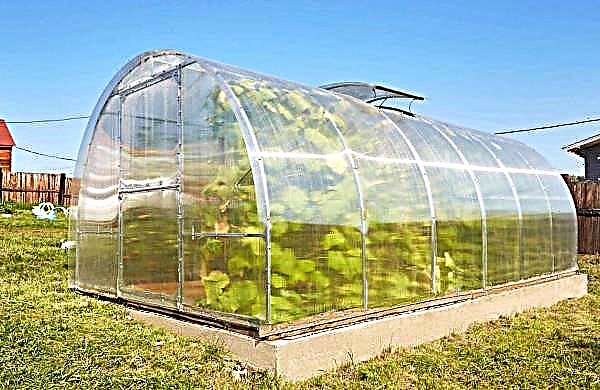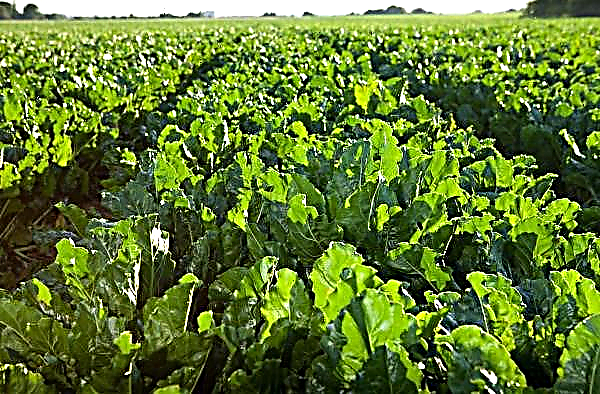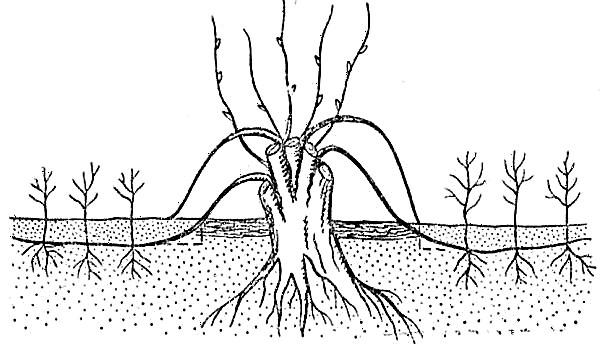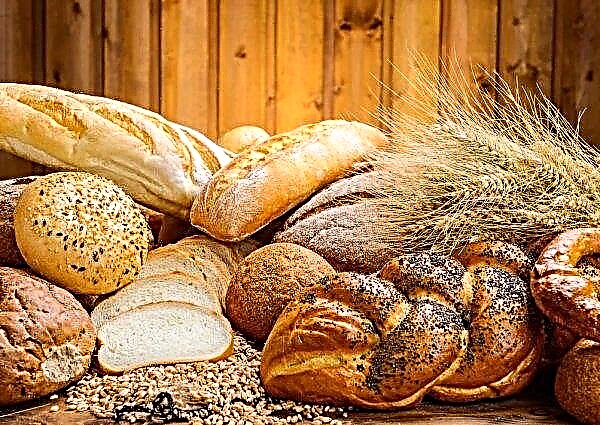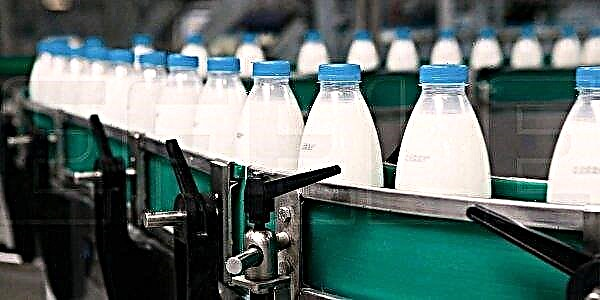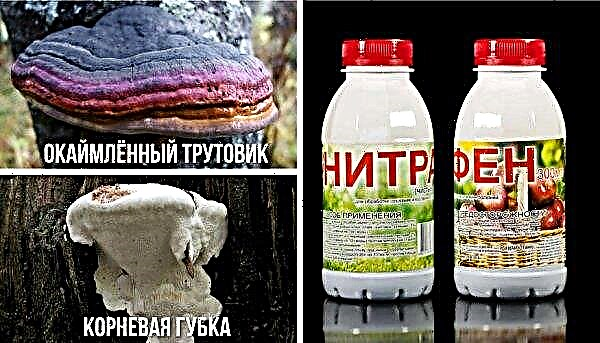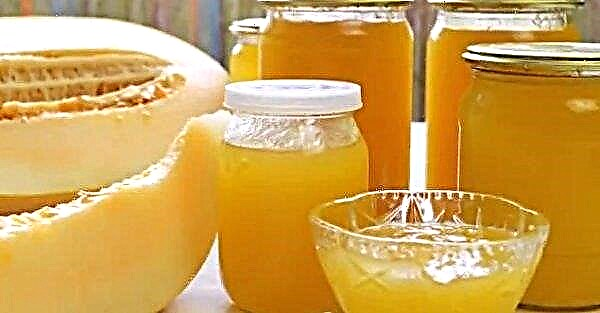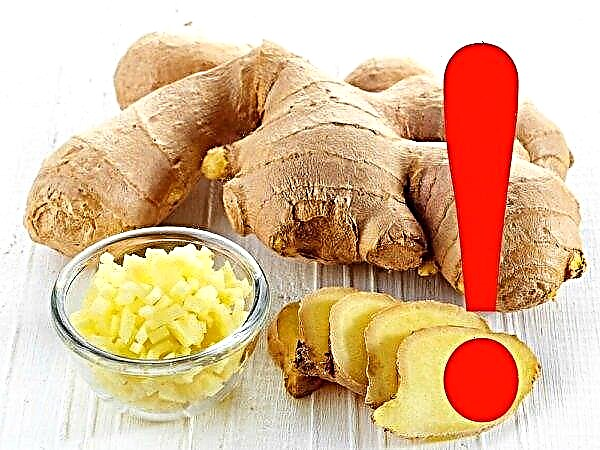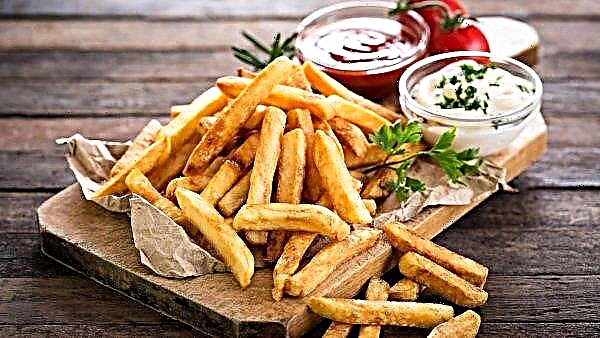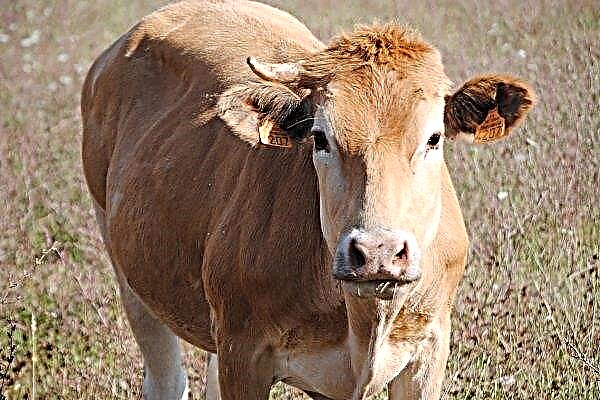Dwarf goats are a relatively new trend in domestic goat breeding. Farm owners and private breeders are increasingly paying attention to these unusual animals. About the characteristics of different breeds, rules of keeping and prospects for breeding - read on.
Origin history
Dwarf goats are a consequence of the genetic mutation of ordinary goats. They began to be domesticated in Central West Africa, particularly in Cameroon and Nigeria. Starting from the XVIII century, sailors began to transport animals to Europe and the USA. European and American breeders from the main species bred many other breeds.
Description and breeds of dwarf goats
In breeds of dwarf goats, confusion often occurs. This is due to active breeding developments and various names in different parts of the world. However, there are the most common varieties.
There are two main breeds of mini-goats:
- Cameroonian pygmies;
- Nigerian dwarfs.
Did you know? The first goats were domesticated by the inhabitants of the Middle East another 9 thousand years ago.
Appearance
Externally, dwarf animals of two breeds differ:
- Cameroon Pygmies. The color of individuals is brown or gray with dark paws and a withers. The body is muscular, legs are strong. The horns are curved back. Growth at the withers of a goat is 0.5 m, that of a goat is 0.6 m. The body length of a female and a male is 0.65 m and 0.7 m, respectively. The average weight of a goat is 25 kg; the goat grows to 35 kg.
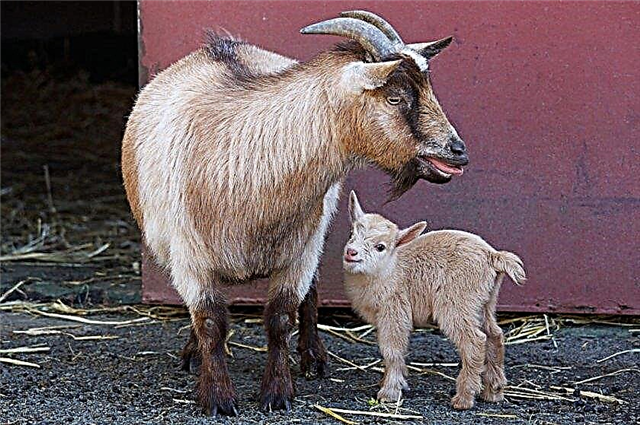
- Nigerian dwarfs. Wool is most often heterogeneous in color; a specific color is not distinguished. The body is less muscular than that of Cameroon. Paws and neck are long. The horns are short. Eyes are blue. The growth of the female on average is 0.45 m, the male is 0.5 m. The average body length is 0.7 m. Weight is 25 kg for the goat and 30 kg for the goat. Outwardly, they are very similar to ordinary goats of small size.

Advantages and disadvantages
Each of the varieties of dwarf goats has both advantages and disadvantages.
- The advantages of Cameroonian pygmies include:
- 2–4 kid in lambing;
- unpretentiousness in leaving;
- resistance to the most common diseases;
- endurance;
- calm nature;
- training compliance;
- fat content of milk is more than 10%.
- The negative features of Cameroonians can be called:
- sensitivity to damp air;
- the likelihood of allergies;
- the need to purchase several individuals - alone the animals wither away;
- 1 liter of milk per day, which is less than that of Nigerians.
- Among the advantages of the breed of Nigerian dwarfs are the following:
- unpretentiousness in leaving;
- resistance to the most common diseases;
- 2–4 kid in lambing;
- an average of 1.5 liters of milk yield per day, sometimes indicators reach 3.4–3.7 liters;
- fat content of milk is more than 10%.
- friendliness.
- The disadvantages of Nigerian mini-goats are as follows:
- fragility of the skeletal frame;
- the muscular system is less developed than that of Cameroonians;
- goats do not tolerate solitary content;
- the need for climate control in the barn.
How to choose good individuals
When buying goats, pay attention to several factors:
- The breeder must provide documents confirming the thoroughbredness of the breed. The progeny of goat mestizos often show the gene of a common ancestor. Thus, the structural features of the animal and miniature are lost.
- Pay attention to growth. The largest individuals of both breeds, Nigerians and Cameroonians, at the withers grow up to 0.7 m. A greater growth indicates uncleanness.
- The weight of the animal is also important. In the paragraph above, the average parameters of dwarf rocks are indicated. If the growth is normal, but the weight is higher than the specified values, the animal is most likely overfed. From overfeeding goats weaken, their resistance to diseases is lost.
- Ask for milk for a test. This is important if you are buying a dairy goat. A product with an unpleasant aftertaste and smell is a reason for refusing to buy. It also speaks of a mestizo animal. It is most likely not purebred and is not suitable for breeding.
Did you know? The wild ancestor of domestic goats is the bearded bezoar goat, which is currently under threat of extinction.
Features of breeding and care
Breeding dwarf goats is impossible without proper care. The three main factors affecting an animal are housing, food, and drinking.
Conditions of detention
Dwarf goats are kept on small fenced farms with a barn and corral. Its size depends on the number of animals in the livestock:
- 0.8–1.2 m² barn per 1 individual;
- 3-5 m² of paddock.
When setting the microclimate, adhere to such indicators:
- temperature - +16 ... + 18 ° С;
- humidity - 50–70%;
- Lighting - from 6 a.m. to 9 p.m.
Important! Mini-goats do not tolerate temperatures below + 15 ° C and high humidity. For a short daylight, install artificial lighting.
What and how to feed
The following foods should be in the diet of animals:
- hay;
- straw;
- grain of corn, oats and barley;
- autumn leaves;
- aspen brooms;
- alfalfa;
- pasture;
- vegetables;
- fruits;
- concentrated feed.
 The forbidden product for goats is bread. Although mini goats love bread, they should be avoided. Vitamins and minerals are also needed by animals. Females devoid of nutrients give birth to weak kids. If males do not have vitamins in their diet, their sexual function fades. Dwarf goats need calcium, phosphorus, iodine, chlorine.
The forbidden product for goats is bread. Although mini goats love bread, they should be avoided. Vitamins and minerals are also needed by animals. Females devoid of nutrients give birth to weak kids. If males do not have vitamins in their diet, their sexual function fades. Dwarf goats need calcium, phosphorus, iodine, chlorine.All the necessary goat vitamins are obtained not only from food, but also from supplements:
- salts;
- soda;
- seaweed for animals;
- vitamin mixes.
Adults
In different farms, mini-goats feed on different schemes. This is due to the individual characteristics of the animals and the experience of the farmer. We can name only an approximate variant of feeding and consumption of products. The diet of the animal primarily depends on the season. In summer, the basis of the diet of dwarf goats is grass. Her animal gets in free grazing.
An adult should receive:
- fresh grass in free pasture (2-3 kg);
- hay (500 g);
- concentrated feed (200–250 g);
- mineral supplements.
Since animals do not graze in winter, the following amounts should be in the daily diet:
- hay (500 g);
- grain (200 g);
- vegetables (150 g);
- aspen brooms with leaves and branches (0.5–1 pcs.);
- combined feed (100-200 g);
- mineral supplements.
 As already mentioned, it is better to proceed from your own experience. After the purchase, give the animals the proposed feed. Next, adjust the diet depending on the well-being of the animal. As an example of the nutrition of females and males, we can cite data from California farms.
As already mentioned, it is better to proceed from your own experience. After the purchase, give the animals the proposed feed. Next, adjust the diet depending on the well-being of the animal. As an example of the nutrition of females and males, we can cite data from California farms.Local goats offer animals an organic diet. Domestic livestock breeders can take note of the proposed system. However, remember: due to the warm climate of California, this scheme is applicable only in the summer.
Males:
- breakfast: fresh grass (grazing), hay (in unlimited quantities), vitamin supplements;
- lunch: hay (in unlimited quantities);
- dinner: grassy-grain mixture (150 g), hay (in unlimited quantities), vitamin supplements.
Unworthy females:
- breakfast: fresh grass (grazing), hay (in unlimited quantities), vitamin supplements;
- lunch: grassy-grain mixture (250 g), hay (in unlimited quantities), vitamin supplements;
- dinner: fresh grass (grazing), hay (in unlimited quantities), vitamin supplements.
Pregnant Females:
- breakfast: fresh grass (grazing), hay (in unlimited quantities), vitamin supplements;
- lunch: grass-grain mixture (400 g), hay (in unlimited quantities), vitamin supplements;
- dinner: fresh grass (grazing), hay (in unlimited quantities), vitamin supplements.
Dairy females:
- breakfast: fresh grass (grazing);
- during milking: grassy-grain mixture with granules for dairy goats (400 g), hay (in unlimited quantities), vitamin supplements;
- dinner: grassy-grain mixture (400 g), hay (in unlimited quantities), vitamin supplements.
Kids
The kids ’nutrition plan depends on their age. From birth to 1 month, they must be fed 4 times a day:
- at 6:00;
- at 11:00;
- at 16:00;
- at 21:00.

The diet of animals in the first 3 months can be as follows (for 1 individual):
- 1-10 day: warm colostrum;
- 10–20 day: hay, 5 g of salt, boiled oatmeal;
- 20-30 day: bran, crushed oats, oilcake, 10 g of chalk, boiled oatmeal;
- 30-40 day: 1.2 l of milk, 50 g of bran, crushed root crops, hay and concentrates;
- 40-50 day: 0.6 l of milk, 50 g of bran and hay, 75 g of concentrates;
- 50-60 day: 0.5 l of milk, 50 g of bran, 75 g of crushed root crops, 125 g of concentrates, 150 g of hay;
- 60–70 days: 0.2 l of milk, 50 g of bran, 100 g of crushed root crops, 150 g of hay, 175 g of concentrates;
- 70–80 day: 50 g of bran, 100 g of crushed root crops, 250 g of concentrates, 200 g of hay;
- 80–90 day: 100 g of bran, 150 g of crushed root crops, 250 g of hay, 250 g of concentrates.
Important! Use only clean containers for drinking and feeding!
Basic rules of drinking
Water is necessary for small goats, like all living things.
When drinking, adhere to the following rules:
- you need to drink animals 2 times a day;
- water is given after succulent feed and before the use of concentrates;
- heat the water, but proceed from the season: in summer it is better to give colder, in winter - warmer;
- Change the contents of the drinkers regularly.

Breeding prospects
Mini-goats are purchased for two purposes: for breeding or for the production of products:
- For breeding. A promising direction is breeding for breeding. Purebred individuals profitable to grow for sale. Their feeding and maintenance are not too expensive. Mini goats are 5 times smaller than usual. Many people, including city dwellers, buy miniature animals for decorative purposes. Cameroons and Nigerians are excellent companion animals. Lovers of exotic pets also pay attention to them.
- For the production of products. At their small size, mini-goats produce a lot of milk. However, with the content of 2-3 individuals, this quantity is not enough for sale. Such breeding is promising only for personal purposes or as a pleasant bonus for decorative individuals. If the goat grows a large livestock, then the sale of milk and meat may well pay off. Keeping small goats is much easier and cheaper than large breeds. The fat content of milk is over 10%, so a lot of cheese is obtained from it.
Mini-goats are unpretentious, productive and attractive animals. They are unpretentious in maintenance, friendly in nature and do not require a lot of feeding costs. Their breeding is promising both for reproduction and for the sale of milk.



